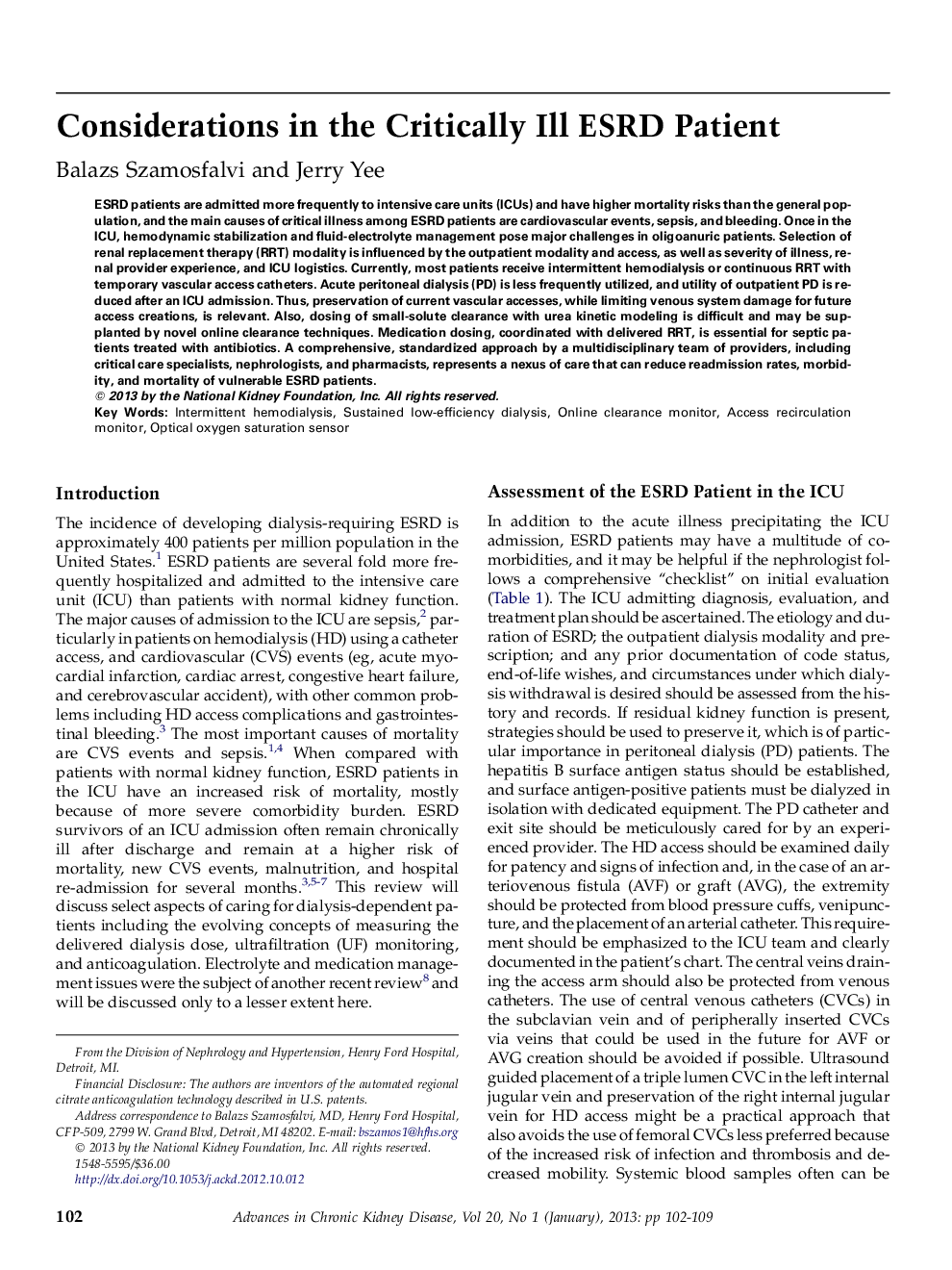| Article ID | Journal | Published Year | Pages | File Type |
|---|---|---|---|---|
| 3846389 | Advances in Chronic Kidney Disease | 2013 | 8 Pages |
Abstract
ESRD patients are admitted more frequently to intensive care units (ICUs) and have higher mortality risks than the general population, and the main causes of critical illness among ESRD patients are cardiovascular events, sepsis, and bleeding. Once in the ICU, hemodynamic stabilization and fluid-electrolyte management pose major challenges in oligoanuric patients. Selection of renal replacement therapy (RRT) modality is influenced by the outpatient modality and access, as well as severity of illness, renal provider experience, and ICU logistics. Currently, most patients receive intermittent hemodialysis or continuous RRT with temporary vascular access catheters. Acute peritoneal dialysis (PD) is less frequently utilized, and utility of outpatient PD is reduced after an ICU admission. Thus, preservation of current vascular accesses, while limiting venous system damage for future access creations, is relevant. Also, dosing of small-solute clearance with urea kinetic modeling is difficult and may be supplanted by novel online clearance techniques. Medication dosing, coordinated with delivered RRT, is essential for septic patients treated with antibiotics. A comprehensive, standardized approach by a multidisciplinary team of providers, including critical care specialists, nephrologists, and pharmacists, represents a nexus of care that can reduce readmission rates, morbidity, and mortality of vulnerable ESRD patients.
Related Topics
Health Sciences
Medicine and Dentistry
Nephrology
Authors
Balazs Szamosfalvi, Jerry Yee,
